#[ The villains are still fighting each other and Tai Lung is no exception
Explore tagged Tumblr posts
Text
Tai Lung could not become the defender of the valley as a dragon warrior, but he was able to become the one who keeps order in the spirit world.
Yes, I like to think that Tai Lung has become something of a cop, having gone into compensation. the fact that he waited until all the villains returned home and was the one who took the chameleon "into custody" so that she would not escape only reinforces my opinion.
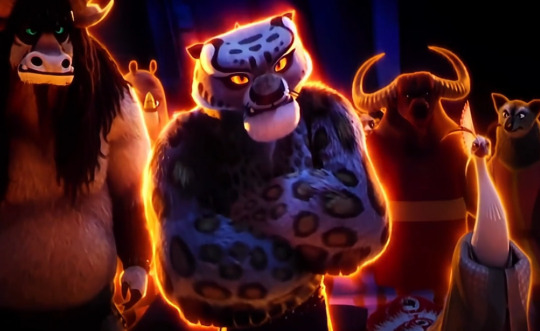
#[ The villains are still fighting each other and Tai Lung is no exception#but he makes sure that this does not go too far and no one tries to use the world of souls to their advantage again#and how he acted as their main voice in kfp4! my pride ]#tai lung#kung fu panda#kung fu panda 4#kfp#kfp4#my post
810 notes
·
View notes
Text
Kung Fu Panda 4 Review
Ok, I saw the movie yesterday and I have some thoughts. I think the film is good, but no where near the level of the first two. It's more like the third tonally. But tbf, nothing can top the second film in my opinion. KFP 2 really stepped up in its depth both in terms of its villain and message. The fourth film is very much the opposite. It's also very predictable and you can easily figure out what was gonna happen pretty early on.
What I liked: the animation is still gorgeous. Seriously, there were some very visually pleasing shots. The character models all looked great and I thought it was cool how the villain still has scales when she transforms. The music is also really nice and fun to listen to. The voice acting was also good and I thought Awkafina did a good job (major step up from Scuttle).
Po's dads were also really fun when on screen. It's nice to see them bond over Po and they do work well off of each other. They were the best part of the film, animation aside. The villain is also pretty cool with her abilities. We will talk about her more in a bit. And I did like Zhen and I'm looking forward to see what they do with her in the future. She's energetic and I did like her design.
What I didn't like: too. much. comedy. Ok look, I know this is an animated film for kids, but what made the first three films (particularly the second one) so good is that the balanced the jokes with depth. This film does have some messages, but it's intercut with so many jokes during dialogue that it takes away from it. They really needed to let this film breathe and have more serious moments to just talk and let things sink in. The villain brought back the old villains and stole their abilities (this was in trailer so not really spoiler). Why don't they do more with that? There is so much untapped potential here.
And that's my other big issue with the film: so much potential. Some of the ideas in this film are really, really good, but they only scratch the surface with it. I wanted to know more about the villain. I wanted to see our fave villains interact more. I wanted to see the villain use her powers more. But we don't get that; we only get the bare minimum. In simpler terms, there's no big "wow!" moment that the other films had.
Spoilers below (tread carefully)
Why did they bring the villains back if they were going to do almost nothing with them? The climax of the film was the Chameleon stealing the villains' abilities and fighting Po but we pretty much saw that in the trailer. Tai Lung gets to do some stuff, but I wanted more. Half of his lines were jokes anyway and I didn't vibe with it. Why did they bring him back if he was just gonna comment on things? I don't remember our favorite snow leopard being this comical. He did quip, but there was still a hardened edge to him. Idk. Maybe he got therapy in the spirit realm. Shen and Kai get crumbs, but again, they could've done so much more. And wasn't Kai destroyed completely?
With Shen and Tai Lung, I would've wanted to see more. I'm glad Tai Lung did finally come to respect Po and it does make sense. But Shen? The last time we saw him he rejected Po's help. Unless he too got the same spirit realm therapy Tai Lung did, him bowing to Po does feel very OOC. Nitpicking further, why was Shen brought back anyway? The Chameleon presumably doesn't know who Po is and Shen isn't a kung fu master. With the exception of the fanservice route, this choice only makes sense if the Chameleon was aware of Shen's actions in Gongmen and thought his level of evil would fit her vibe.
Nitpicking aside, there was so much opportunity for Po to confront his villains again and have a deep, serious moment with them. Whether either side likes it or not, they're reunited for a short amount of time. Why not capitalize on this great opportunity?
Speaking of the villain, so much untapped potential. Her design is great, her abilities are really cool, and Viola Davis does a good job voicing her. So why doesn't she get to do more? Imagine a really cool fight sequence where Po confronts her, but she shifts so much that it begins to mess with his head. Or she transforms into the older villains and Po is caught off guard? Instead, we get half the climax spoiled for us in the trailer. What was really cool about the other three was that we got multiple fight scenes with them to showcase their abilities. Thus, the final battle dialed it up to an 11 and we got a truly epic finale. Here, it feels like there should've been more, but there wasn't. Even her backstory feels lacking. It's there... but only surface level. Even Shen, arguably the cruelest of them all, had nuance and depth.
Also, why couldn't we get more of the Furious Five outside of a glorified cameo? Tigress and Po friendship is truly amazing.
As much as the jokes miss, there are some good bits. Shifu trying to deal with Po's shenanigans always crack me up. I also like the bit where Po tries to meditate and his thoughts get in the way. Because hey guess what, that's what my head is like and it's really freaking hard to quiet it down. So, there's that. I just wish the writers didn't feel like they had to insert jokes in almost every line of dialogue, you know? Li and Ping dad adventures are great except half the lines are jokes about how worried they are for Po or how not tough they are. Why not have a deeper conversation? I think it would make everything feel more natural.
I also wish Po himself was a tad more mature. I'm not expecting Shifu or Tigress levels of seriousness, but I felt that he kinda was a bit too childish. Po is one of those characters who loves to have fun, but knows when he has to be serious. However, he also likes to lighten things up with comedy. In this movie, it felt like he only really leaned into the comedy side of things. He had his moments, but I'll be honest, I really missed the "the only thing that matters is what you choose to be now" levels of dialogue. The proverb joke got old real fast, ok?
Grace Randolph from Beyond the Trailer described this movie as episodic and I can see it. The story bits are very segmented between the villain, heroes, and Po's dads. The flow and pacing of this film really needed to be upgraded.
Ok, that's all I got for now. I'm sure I'll think of something else to say (aside from encouraging everyone to rewatch KFP 2 because I'll never get enough of that film).
#kung fu panda#kung fu panda 4#kung fu panda 4 spoilers#po#zhen#tai lung#lord shen#kai the collector#the chameleon#master shifu#mr ping#li shan
121 notes
·
View notes
Text
SOO HOW ARE KFP VILLAINS THE OPPOSITES OF EACH OTHER??!!11 (SILLY ME SAYING STUPID THINGS I GUESS¿¿)
Let's start with Tai Lung (TL), he is strong, self-centered, and obviously a frustrated student
He is a "fallen hero" (at least for himself), the Dragon Scroll was his destiny and he knew it, Shifu knew it and so did everyone else. But then, it isn't, he feels betrayed and left behind. They denied his destiny and glory, in his eyes ofc.
Now Lord Shen (LS), is sophisticated and ambitious, that's obvious. He is reserved and also self-centered, but he wasn't always like that, he LOVED his parents and his parents LOVED him. But his parents' love and pride (added to his flaws) led LS to commit the biggest crime.
And finally, General Kai is (almost) all things mentioned before but worse.
Now, how are they opposing each other?
Tai Lung and Lord Shen: The best example, Tai Lung and Lord Sheen have many differences, the main ones are the fighting style (Tai Lung being pure force and Shen being refined), their experience in fighting (TL is an expert while Shen himself admits he isn't very good at it) but overall THEIR ORIGINS. TL was an orphan left on his own luck and Shen was the child of a rich and powerful family. TL ALWAYS had a difficult relationship with his father/master, looking for his pride and love; Shen had it, he knew it, and he grew up being loved and independent
Ironically they ended up with the same fate, and how they ended up like that is also different. TL believed with every fiber of his body that he was the Dragon Warrior, his destiny; Shen didn't, his destiny was death and humiliation, and he wouldn't let it happen.
Tai Lung committed his crimes to achieve his "destiny", and Shen committed them to escape from it.
Lord Shen and Kai: Their difference are abysmal, not only in their size and strength but also in their ways of showing dominance. Shen doesn't have to speak too much, he chooses his words wisely; Kai chit-chats, even if he is more than able to do all he says, but still, he is just ranting half of the time. Even in their final moments, Shen is more desperate, forgetting completely his elegance while Kai becomes a wild beast in his attacks. And of course...
Lord Shen envisioned the "Future" and ignored his past, Kai envisioned the past and ignored the future.
Last but not least, Kai and Tai Lung: Yes, they are very alike but they are still opposites in something really important: their objectives. Tai Lung is the "Hero of his own history" who "Didn't do anything wrong" Even when he was about to kill his own father, he still wanted to be the "Chosen One", and Kai... Well, he is not a hero, and he is proud of it.
Beast of Vengeance, Maker of Widows, Supreme Warlord Of All China, etc, etc. Really different from the "Real Dragon Warrior". Honestly, that's something that makes me think that they wouldn't get along, Kai didn't care at all for others (Oogway being the only exception) or learning different ways actually, even when he was shown something new he only wanted destruction or death since the beginning, at least Tai Lung tried to excuse himself.
Tai Lung is a "Fallen Hero" and Kai is a villain.
#kung fu panda#kfp#kung fu panda 2#kung fu panda 3#kfp 2#kfp 3#kfp tai lung#kfp lord shen#kfp kai#tai lung#lord shen#general kai#kfp villains#probably all wrong#idk how to tag this
20 notes
·
View notes
Text
Kung Fu Panda 4 Review

This movie came out months ago and isn't really talked about anymore, but I had this review in my notes and wanted to share :)
(It’s also just my general thoughts, not separated by positives and negatives because I didn’t follow guidelines when I wrote this)
Visually beautiful, Dreamworks never fails to deliver.
The animation of The Chameleon shapeshifting was sooooo cool and sooooo fluid and a little gross but I loved it. It was really interesting to see how each body part and shape melded into another.
There were no Furious Five except for a small scene at the end, but they didn’t have any voice lines. Sad, but also somewhat understandable. This was a very Po-and-Zhen-centric movie, and adding the Five could have muddled things. That doesn’t mean I didn’t want Tai Lung and Tigress to meet again, but that’s just a me thing.
The beginning had me pretty nervous. Some of the lines and deliveries felt stilted, there was a lot of “tell don’t show,” and it was all pretty fast and rushed so they could get to the actual plot. (Some of the “tell don’t show” makes sense in context from later revelations about Zhen and The Chameleon, but still).
I wish Zhen’s design more closely matched her concept art and wanted poster. It’s a small thing, but pushing her features to be sharper rather than pulling back towards softness/roundness like they did would have made her much more visually interesting.
It felt a little awkward at times since Po has already learned all of these lessons, so transferring to a new protagonist was sometimes hard to watch. Some of the deep connection/bonding moments they had also felt forced, like she just started telling him her tragic backstory apropos of nothing. In the first three, characters revealed things about themselves as they became relevant, because they were giving Po advice about something he was facing, or Po was actively looking for the answer. It felt a lot more naturally paced back then vs now.
It had good comedy moments, pulled quite a few chuckles out of me, but was also able to rein it in and be serious when it counted. It was definitely weird with the modern slang/humor (“Ok, I see you spiritual leader!”). Then again, I’m sure the humor of the other three movies were modern when they came out. Or it’s just Awkwafina, who’s to say.
The movie kept cutting to the Gay Road Trip RomCom B-Plot with Po’s dads, which was sometimes kinda cringe, other times very fun. I love that they kept both his dads around and they still get along really well. I’d say they co-parent, but their son is an adult, but they still live and run the restaurant together (I thought the panda village was destroyed in the last movie and that was why, but no, Li Shan is choosing to stay there). Their new familiarity and unabashed love for their son (they constantly call Po “our” son) is both heartwarming and kinda gay. It took me a bit to realize, but they were giving similar energy to Timon and Pumbaa.
The choreography was stunning. Every fight, chase, and scuffle felt unique. The fact that they kept it so fresh after three movies says a lot. It felt similar to old school KFP fights in terms of stunts, but the more dynamic camera movements and lighting/graphics also added a modern spin on it.
The use of stylized graphic elements throughout? Phenomenal, I love that studios have been getting more stylized with their animation since Spiderverse came out. Even more than just colored backgrounds, it transferred to scenes as well. Po’s inner voices floating around him, his dumpling hallucination, the bright colored lighting, and even that fight scene where they’re all in silhouette in fog and the sound gets muffled. Very cool, it reminds me of the montage scene from KFP2.
TAI LUNG!!!!! Ian McShane!!! It was great to see him and the previous movie villains make an appearance. I was hoping they’d get to team up in a fight, but they get their kung fu skills taken away or whatever, so no such luck. Also, the fact that Po seemingly killed, like, at least one other Villain since the first three movies is funny. Just killed some guy named Scott.
Live Tai Lung Reaction for real. So funny to cut to his commentary and see him kind of come around and rooting for Po. The enemy of my enemy and all that.
Po is still a fanboy despite being the greatest warrior in China, and I’m SO glad they kept that part of his character because it’s part of what makes him so charming. His character overall still felt very consistent in terms of attitude and mannerisms.
The fact that he earns the respect of all the villains he’s defeated? Amazing. I love when heroes and villains can come to an understanding like that, or even work together in a way (Dragon Ball changed me fundamentally as a person).
○ And the fact that it was Tai Lung getting a conclusion to his character arc added a lot of bonus points because I love him. It also makes sense to me because he finally got to see in-person what the real Dragon Warrior is supposed to be, and that he wouldn’t have been able to be that person. ○ It even makes sense for Kai to respect him, he was Master Ugway’s friend long ago, and Po beat him fair and square. ○ Lord Shen though?? Absolutely no way he respects Po after he did a genocide on his people and chose to die instead of grow and change lmao.
Sady, there was no reunion or reconciliation between Tai Lung and Shifu which was a huge missed opportunity. Also, no confrontation between Li Shan and Lord Shen, that could have been a really cool fight scene, but I don’t think they could have spun a lesson about forgiveness from that. The man did a genocide, and we’re not quite at Steven Universe levels of love and acceptance in this franchise.
It makes sense for Tai Lung to be the speaker for these villains (and not just because they didn’t get Gary Oldman or JK Simmons) because he and Po are connected via Shifu and the Dragon Warrior prophecy.
The villain in this movie actually did have a lot in common with Po, at least in terms of their origins. They were both ostracized and pushed away from kung fu because of their size and outward appearance. However, Po’s unwavering optimism and trust is what made him the hero, while The Chameleon turned bitter and let her insecurities control her. It was a unique dynamic, I just wish they pushed it or had Po acknowledge it more. It did feel weird that the main reason she was turned away was her size when Mantis is on the team (and was the first one to come around on Po in the first movie because it’d be hypocritical of him to judge others for their size). I guess The Chameleon was just looking in the wrong dojos for a master.
The overall plot felt pretty similar to the third movie with the villain capturing and taking the power of other kung fu masters.
○ Also, The Chameleon wanted to take all of their powers and use them against Po, but he already beat all of them before. My friend even said they were waiting for Po, or even some of the captured villains, to point out that he already won against all of this power before. ○ I myself noted that when The Chameleon took Tai Lung’s nerve technique and was about to use it on Po, Tai Lung looked confused. I think narratively it was meant to be like “Woah, how did she steal my technique?” but to me, it felt more like “I already tried that on Po and nothing happened, why does she think this will work?”
I need to talk about the music. As usual, the score absolutely fucks, but the traditional Chinese cover of Crazy Train??? Amazingly disguised, it took me a second to hear it. And the Jack Black cover of Baby One More Time was so fucking good, added instantly to my playlist.
TLDR
Overall, the movie had a rough start, but I came around pretty quickly. It’s certainly a cash grab and not as good as the originals, but it was still enjoyable and felt nearly on par with movie three. Definitely still lowest on the list, though.
7.62/10
#kung fu panda#kfp#kfp 4#po kfp#zhen kfp#tai lung#li shan kfp#mr ping kfp#kfp the chameleon#long post
12 notes
·
View notes
Text
Having to win vs. Wanting to win, the appeal of Hero vs. Villain interaction, and building a bigger sense of rivalry
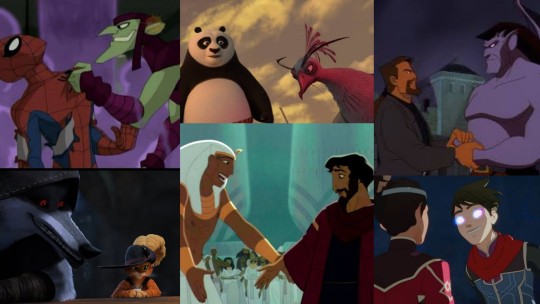
Something that I was wondering about for a while now was why between the two Spiderverse movies, the second one appealed to me so much more than the first
The first one is a more complete story, has a very solid beginning, middle, and end, while the second one feels like half of two movies pieced together with the Spot storyline and the Spider Society storyline which even together still don't even make a full movie...
And yet, I just find myself enjoying the second one a lot more and re-watching it a lot more often. 🤔
And the reason for it is probably because I'm just drawn more by the way this movie handles character interaction and banter, particularly between the protagonists and antagonists and how they establish connections with each other.
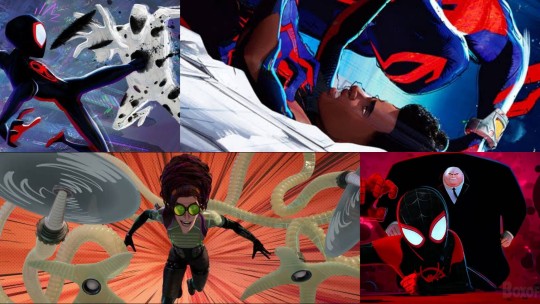
Spiderverse 1 is a great movie, but when it comes down to it, Miles only really has meaningful interactions with his parents and with Peter.
He doesn't really have a big heart to heart moment with Gwen or the other Spiders that much, and more importantly, he really doesn't have that big of a connection with the villains, Kingpin and Dock Ock. He does get a little with the Prowler, but that's really it, just a little.
Meanwhile, in Spiderverse 2, Miles gets to talk A LOT with everyone. With Gwen, with Pav, with Hobbie, with Miguel, and with Spot. There's just a bigger focus on having these characters not just interact but actually connect with one another.
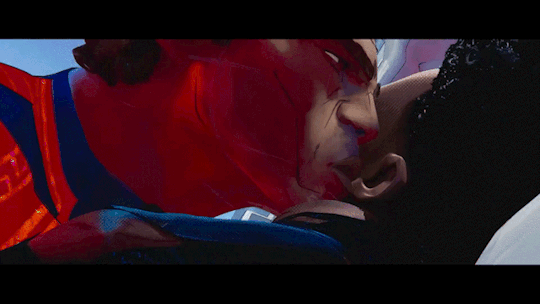
When Miles fights Kingpin at the end of the first movie, I just don't feel that big of an investment cause these two barely talked with each other, so they have nearly no rivalry. While in the second movie, there's a huge rivalry born between Miles and Miguel because we see that both of them are fighting due to their conflicting ideologies, and we also see their relationship changing as the story progresses, as Miguel goes from being hostile to Miles, to trying to be understanding, to being frustrated, to back to hostile again.
This made me notice how much I rely on characters actually interacting and giving a sense that they're connecting with one another for me to feel invested in their confrontations.
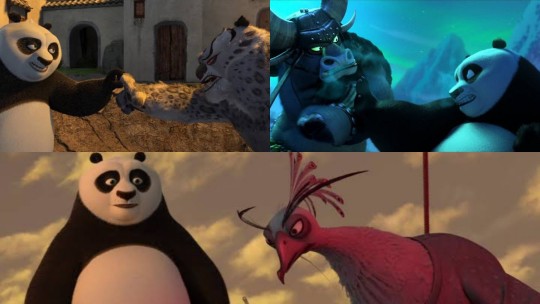
It's one of the reasons why Kung Fu Panda 2 stands out so much compared to the other 2 to me.
The fact that we actually see the hero and the villain meeting each other early on in the story, talking, learning about one another, growing as they get to know one another, comparing their experiences, and giving a true sense of connection... We don't really get that in the first or third movie.
Po doesn't even meet Tai Lung or until the climax of the first movie, and his first conversation with Kai in the third is mostly just done for laughs.
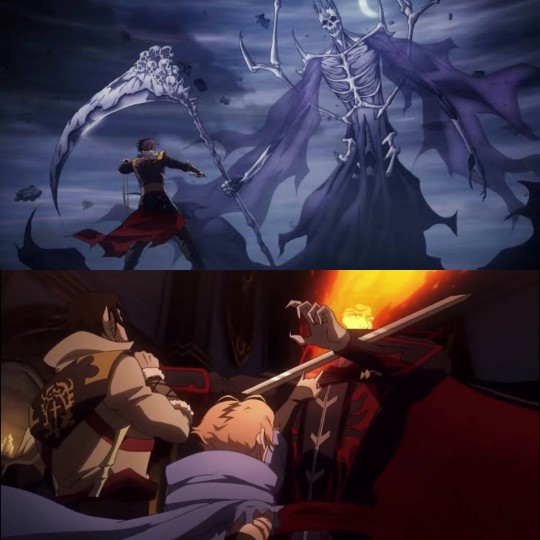
It's also a small problem I had with the Castlevania show in seasons 1 through 4 (haven't seen Nocturnal yet).
In this series, characters don't really talk when they fight, and they don't really meet the people they're going to fight until they're fighting them. So a lot of times you're just watching people with nearly zero history between them trying to tear each other apart.
They feel like soldiers, fighting because they have to, not because they want to.
I think the biggest exceptions are the fight with Dracula at the end of season 2 and Death in season 4, because Dracula does have a history with Alucard since they're father and son, and Trevor does try talk a little with Death since he sees a lot of himself in it as both of them are like entities who only know how to kill things. But aside from that, a lot of the fights feel like Power Rangers battles where the heroes are just fighting the enemies of the week out of duty.
The show does its best to give each character the necessary amount of depth, motivation, conflict, personality, and history, but it kinda sucks in building the sense of rivalry between these people.

I think the biggest rivalry in the show is probably Hector and Camilla, which... are honestly two characters I care very little about since they have so little to do with the actual protagonists.
Frankly, I really wish I could have seen Trevor, Alucard, or Sipha actually talking with these two, or any of the other villains for that matter, to see how their interactions would go, but most of the villains just talk with each other.
Much like Spiderverse 1, and Kung Fu Panda 1, the heroes and the villains just feel like they're so distant from one another and only truly meet when the story is already about to end... And that feels like such a waste.
I wanted to see the main trio talking with Hector, Camilla, Issac, and Lenore. I wanted to see Po talking more with Tai Lung or Kai, trying to learn what makes them tick. I wanted to see Miles talking with Kingpin or Dock Ock, or heck, the Prowler.
Miles and Prowler interact so much in the comics and in the games, but in the movies there is so little of them.
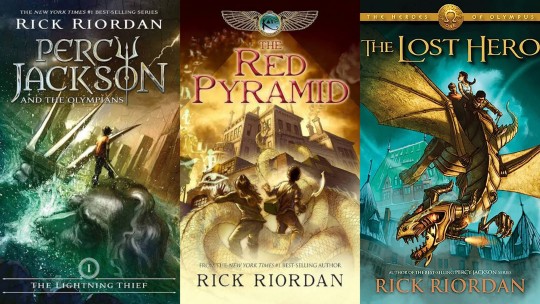
I remember having similar thoughts with the Rick Riordan books.
The heroes in it usually have great banter with the smaller villains, like Ares, Seth, or the giants, but when it comes to the big villains like Chronos, Apophis, or Gaea, the confrontation with them is so brief and the way they're defeated is so simple, and more importantly, the connection between them and the protagonists is so thin, that it kinda feels anticlimactic.
The books try to build up the rivalry by having the characters see each other through dreams or visions, but they don't really talk much during the actual battles, and most of their exchanges prior to these battles are just generic stuff like "I'm gonna kill you! No, You won't! Yes, I will! No, you won't!"

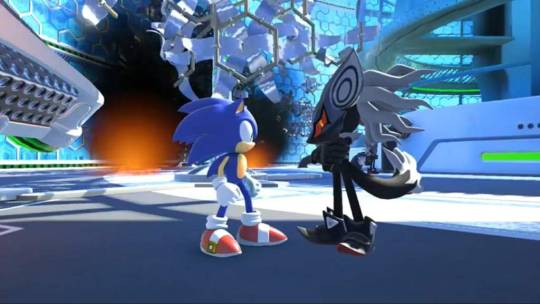
Another example of the importance of interactions, Sonic Frontiers.
You get a ton of chances to talk with Sage as you go through the islands, and by the time you reach the third one, she kinda turns into a viewer excited about seeing how Sonic will defy the odds once again.
She's changing as they exchange words. Imagine how lame it would have been if she hardly ever talked to him, kinda like how it happened with Infinite where they just meet briefly before a fight and have the most generic banter ever.
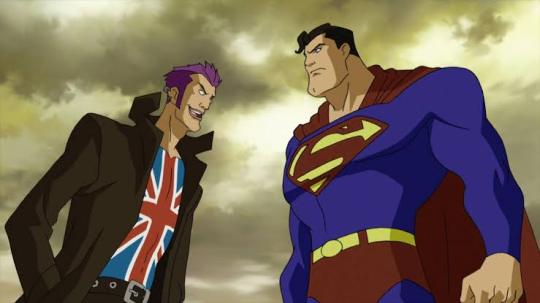
Similarly, why does everyone love Superman vs. the Elite so much? Because the whole movie is about Supes butting heads with these guys who try to get him to test and provoke his ideals and beliefs.
This isn't just a hero fighting villains of the week to save the day or stop them from conquering the world. These people are trying to prove a point and they're using each other to do it.
Their interactions are causing them to develop an antagonism between each other that makes it even more exciting to see when they do eventually clash in the climax, because we followed their history and know where each is coming from, what they're fighting for.
Same reason people love Batman and Joker. Their interactions are always like that.
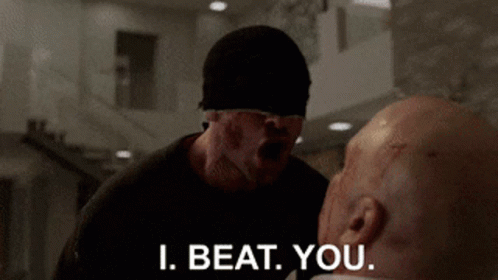
And then we have Kingpin in Daredevil.
That whole show's biggest selling point is just these two being constantly at each other's throats because they each represent something the other absolutely hates.
Anytime they're in a room together you just get a goldmine in writing quality because they have such amazing interactions and so much good chemistry.
Same case with Killgrave in Jessica Jones.
A lot of people often ask "Why do Marvel movie villains suck so much?" because they don't actually build this sense of animosity with the heroes. They're just things to be dealt with, not things the heroes personally want to deal with.
Ironman had to deal with Ironmonger, Thor had to deal with the dark elf, Captain America had to deal with Red Skull, but DD wanted to deal with Fisk and Jess wanted to deal with Purple Man.
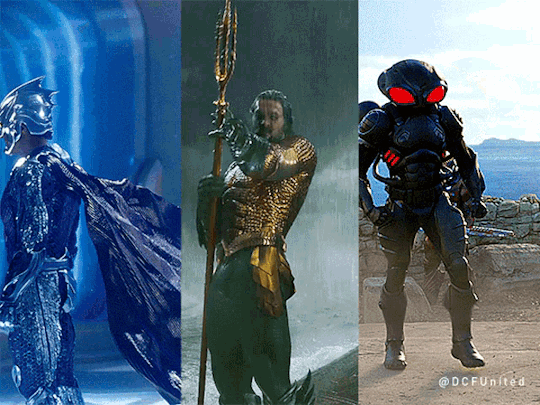
This contrast of "want to" vs. "have to" does so much to increase the investment in a character for me.
Aquaman did that really well by making you feel like both villains really wanted a piece of the protagonist for very petty and selfish reasons.
It makes them feel more shallow, yes, but it also makes them feel more real, and it makes their fight more personal.
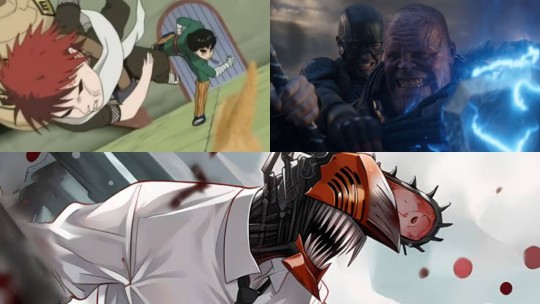
Mind you, I don't necessarily need a Hero X Villain banter all the time. There are many cases where I get really invested even if the characters don't talk.
The best example probably being Rock Lee vs Gaara, which is mostly a silent fight just like the ones from Castlevania, but unlike those where it feels like characters are fighting because they have to win, this one feels like they fight because they want to win.
There is no banter, but you still sense their motivations and ideals clashing through their fighting methods and expressions.
Same thing with Thanos vs. the Avengers. They don't exchange many lines, most of it is just Thanos' monologuing (which I kinda feel it's a wasted opportunity because I think Cap and Thanos could have had some really good exchanges), but you still get the sense that this fight is personal for all of them. They don't just have to win, they want to win.
The final battle of Chainsaw Man part 1. Same deal. Very minimal talk, but just enough talk to let us know that these are people fighting for personal reasons.
Avatar, The Last Airbender, lots of quiet fights, but the heroes do get to meet most of the villains before facing them and do build a rivalry before exchanging punches.
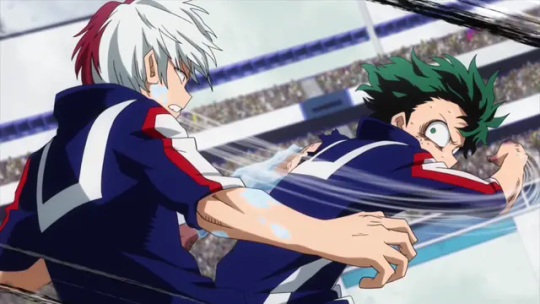
My favorite fight in My Hero Academia is, again, a battle of ideals, a fight of "I want to win", not just "I have to win," a fight where there is a lot of banter with their personalities shining through their words and actions and bouncing well off each other.
They make it more personal, more selfish, and thus, more interesting.
I love feeling this sense of connection when I watch or read heroes fighting villains in stories, and I really wish more series would try harder to develop this feeling so I can enjoy it more often.
I want to get more of this sense of "This fight is personal. I'm fighting for myself! I want to win!" and all that stuff.
#kung fu panda#netflix castlevania#spiderverse#heroes and villains#rivalry#superman vs the elite#rick riordan#aquaman#daredevil netflix
25 notes
·
View notes
Note
Okay now I'm invested. Can you tell us which element each of The Furious Five are? I'm guessing Crane is air? Your AU is so good !
Ooohh, I've been waiting for someone to ask this. Imma just list down the whole gang.
I made Crane an airbender, for obvious reasons. Tigress is a firebender cause of how aggressive her fighting style and just her overall design is. Mantis is an earthbender, he already has the praying mantis style of kung fu down lmao. For Viper, i honestly had a hard time between earthbender and waterbender, but ultimately she became the waterbender of the group since she's already got a fluid fighting style and with her ribbon dancing and all that. Lastly I figured, since none of the members are a nonbender, i think Monkey should be the one, he's just really fast and good with flips which reminds me of Ty Lee.
Of course they don't exactly look the conventional citizens of their nation (except for Tigress and Mantis). I think since they mostly reside at the Jade Palace to train their respective elements, then maybe they were given incentives to dress however the like, which includes dressing outside of their nation's aesthetics, so long as it doesn't disrupt their training (Crane and Monkey comes to mind). I also headcanonned Viper to be mix earth kingdom and water tribe, which is why she's a waterbender posing in more earth kindom clothes.
Master Shifu (lmao would they call him Shifu Shifu in atla verse) is a firebender, directly taking under Tai Lung (he's in prison now though) and Tigress under his wing who I made both firebenders. Master Oogway is now an airbender since he just has that feel y'know? Very spiritual and all that.
Lastly, I made Po an earthbender, although he went about his life not knowing he was a bender at all. I like to think that he was more of a late bloomer and him being under Mr. Ping, who is also just a regular Earth Kingdom citizen, he never honed his skills despite being an avid fan of all things bending related. Being announced as the Avatar was definetly what he was not expecting.
For the Villains, Tai Lung was trained to be the next Avatar under Master Shifu's, but wait I thought the Avatar was an earthbender? Well since councils were made known of who the avatar was when they were still a baby and was only to reveal this to the Avatar theirself when they turn 16, news got passed to the Fire Nation that a certain remote village in the Earth Kingdom resides the new Avatar. No one expected that the exact village to be massacerred the next week. Lord Shen, the sole heir to the Peacock Clan, one of the strongest clans known in the Fire Nation, was unfortunately a nonbender. Of course this didn't stop Shen, although not possessing any bending abilities, he soon became a powerful figure with the help of his machines. Soothsayer predicts that he will meet his end by an Avatar hailing from the Earth Kingdom. This specificity is important to showcase how in the movie, only the pandas are a threat to him, by making sure only an Earth Kingdom Avatar was to defeat him, the events will go about without him trying to capture any more Avatars. Kai on the other hand was an earthbender soldier, a close friend to Monk Oogway. He returned to seek revenge after escaping the spirit world after 500 years.
#i hope this all makes sense lmao i just brain spat that in less than 15 minutes#mebs rambles#kung fu panda#atla#kfp!atla#atla au
103 notes
·
View notes
Note
Tell me more about how Po and Shen are narrative foils! Is it because they had different reactions to fame/power, with Po rejecting it once he had it and Shen coveting it?
@cypsiman2: I would definitely like to hear your Po and Shen foil thoughts!
@foxy-knowledgeseeker: Queen, please divulge some thoughts about Po and Shen 👀
I love it when people let me ramble 😭💛
SO. For those who have no idea what a foil is (valid), here is a handy dandy definition:
foil - a literary device designed to illustrate or reveal information, traits, values, or motivations of one character through the comparison and contrast of another character
Essentially, characters are foils when they complement and/or contrast each other. Commonly known Shakespearean foils are Hamlet & Laertes/Hamlet & Fortinbras and Romeo & Mercutio. If you haven’t read either of those plays, no worries! Harry Potter and Draco Malfoy are also foils. Foils have similarities (e.g. Hamlet and Laertes have both lost their father and are seeking revenge) but also significant differences (e.g. Hamlet procrastinates while Laertes takes action immediately) that basically help draw attention to the other. Hopefully that gives you an idea of what a foil is if you’d never heard the term before!
But why, you might be wondering, are Po and Shen foils? Well, they complement and contrast each other, obviously, which I will delve into in a moment. The core reason, though, is because they share an inherent connection. Speaking strictly within terms of the second film (since that’s what my paper focuses on), Lord Shen slaughtered all of China’s pandas - including Po’s parents - when Po was a baby; as such, Lord Shen and Po’s stories have been intertwined since the very beginning, technically prior to the film itself. Compare this to the first and third movies: Po has no connection to Tai Lung or Kai (the respective “villains”). That is actually the difference between a foil and an antagonist: Tai Lung and Kai are the “bad guys,” but they aren’t foils to Po because there is no linkage between them. Shen is also a “bad guy,” but the connection he shares with Po in their past (and how that plays out in the present) is what makes them foils.
In my research, I specifically analyzed the application of yin-yang and wuxing philosophies to Po and Shen’s relationship as foils. I will explain why in a moment, but first: what are yin-yang and wuxing?
To keep it simple: yin-yang is a Chinese philosophy where yin and yang are two opposing yet complementary forces that change naturally from one into the other, creating a process of harmonization that ensures balance. Yin is the black swirl, representing qualities that are receptive, passive, and so on. Yang is the white swirl, representing qualities that are prominent, active, and so on.
To continue keeping it simple: wuxing is another Chinese philosophy that loosely translates to mean “five elements,” these elements being wood, fire, water, earth, and metal. The elements have different relationships with one another, either overcoming or generation (e.g. wood generates fire but overcomes earth). One crucial reason I analyzed wuxing alongside yin-yang is because each element is considered predominantly yin or yang, though each element can of course be further divided into yin and yang qualities (e.g. water is a yin element, but a flowing current is yang to still water’s yin).
So now you know the basics of what yin-yang and wuxing are. But why, you may be wondering, did I specifically chose to examine the influence of those two philosophies in particular regarding Po and Shen’s relationship as foils? Pretty simple reasons, actually: the recurring fire/water motifs and yin-yang imagery and thematics in the film. But allow me to get more specific! Let’s start with wuxing, since that’s the order I take in my paper, lmao.
Throughout Kung Fu Panda 2, Shen is consistently associated with fire. Similarly, Po is associated with water. I cite a ton of examples in my paper, but I don’t feel like getting them, so you’re just going to have to believe me, lol. Anyways! In wuxing, fire and water are considered opposite elements, and moreover fire is considered yang while water is considered yin, which develops Po and Shen’s oppositional dynamic as protagonist and antagonist. Not only that, but water overcomes fire in wuxing, which is a direct connection to Po’s eventual defeat of Shen. However, this is only a surface-level glance at the role of wuxing! Going deeper reveals how wuxing is applicable to the core of Po and Shen’s oppositional relationship. Not only does water overcome fire through Po’s defeat of Shen, but Shen loses everything on the water of Gongmen Harbor. His firepower is destroyed and he himself dies, too. Inversely, Po never succumbs to fire, neither as a baby when Shen attacks his village nor later when Shen tries to kill him with his fireworks weapon. Po defeats Shen on the water of Gongmen Harbor.
In sum: the inevitable submission of fire to water as asserted by wuxing is clearly expressed through Po and Shen’s oppositional qualities as foils, namely their dynamic as protagonist and antagonist.
It is also worth noting that Shen’s fire is always yang, i.e. beyond the general association. Shen’s fire is action-based and destructive, namely when he slaughtered the pandas and through his intentions to conquer China with his fireworks weapon. Shen’s yang fire is juxtaposed with Po’s use of yin water to defeat him. To redirect Shen’s fireworks in their penultimate battle, Po visualizes them as a water droplet; in doing so, yin qualities are emphasized: stillness and curvature. Water overcomes fire as yin eases the destructiveness of yang. As a result, the oppositional dynamic of Po and Shen through the fire/water visuals of wuxing comes full circle throughout the film, beginning with Shen destroying Po’s people by yang fire and ending with Po defeating Shen by yin water.
I should also note, however, that while Shen is only associated with yang qualities of fire, Po is associated with both yin and yang aspects of water. There is the yin of the water droplet and of the harbor’s stillness, but there is also the yang of the current that brings him to the soothsayer after he was shot by Shen’s weapon. This association of Po with both yin and yang qualities of water, something Shen never demonstrated with fire, relates to another crucial aspect of Po and Shen’s relationship as foils: inner peace.
As I mentioned earlier, the natural flow of yin and yang ensures balance. I don’t have the quote from Master Shifu on hand lol, but what you need to know is that the concept of inner peace in Kung Fu Panda 2 equates to a harmony of yin and yang (which is already the case in popular culture, anyways). This inner peace aspect of yin-yang philosophy is actually reflected in Po and Shen’s complementary arcs. How? Well, Po and Shen share the same struggle in Kung Fu Panda 2, as both characters have complicated relationships with their past and future. The result is that they both have a dependence on yang, where their first instinct is always to take action. At least initially, they lack the passivity and receptiveness of yin needed for inner peace.
But what do I mean by “complementary arcs”? Well, Shen is obsessed with controlling his future. He took action by killing all the pandas because the soothsayer foretold a warrior of black and white would defeat him. But his obsession with his future is also linked to his inability to let go of the past. Shen still believes his parents wronged him and seeks to right that wrong by taking action to conquer China. Po’s struggle parallels Shen’s. His own dependence on yang is clear in that he seeks answers about his past from everyone except himself for a majority of the film, including asking Shen, his enemy who has no qualms about killing him. Po also actively represses his memories several times about the night his people were killed. Similar to Shen’s need to control the future, Po sought these answers because he believed knowing his past would determine who he was supposed to be.
In sum: Po and Shen’s parallel struggles with the past and future and with yin and yang complement each other, strengthening their relationship as foils. They have too much yang, they need more yin. Decreasing their reliance on yang and embracing the receptiveness of yin would allow them to find inner peace.
That is where Po succeeds and Shen fails, their parallel arcs splitting. During the sequence of “Po Finds the Truth,” Po harnesses the receptiveness of yin by allowing himself to recall his memories of Shen massacring his people instead of fighting them. Through yin, Po is able to accept his memories and recognize that he cannot control his past or his future; only his present. In doing so, he finds inner peace. Shen, on the other hand, is unable to embrace yin, unable to let go of the past and future, and unable to find inner peace. His failure is demonstrated at the end of the film as he asks Po in disbelief how Po was able to find inner peace after having lost everything by Shen’s own hand. That said, while Shen cannot find a harmony of yin and yang, he does demonstrate some of yin’s passivity through his final act in the film: he accepts his death, allowing his weapon to crush him instead of stepping aside.
Ultimately, Po and Shen’s arcs complement each other as foils because they share the same struggle, reflected in how they were both driven by yang and needed more yin to find inner peace. Only one succeeded.
The gist of it: both yin-yang and wuxing philosophies are embedded into the core of Kung Fu Panda 2, that core being Po and Shen’s relationship as foils. Through fire/water motifs, wuxing emphasizes their oppositional dynamic as protagonist and antagonist. Yin-yang strengthens their complementary struggles of relying too much on yang’s action and not harnessing enough of yin’s passivity and receptiveness. The power of water over fire in wuxing marks where their narrative arcs diverge: water overcomes fire, Po defeats Shen, Po finds inner peace where Shen fails.
I actually have MORE thoughts™ about their complementary character designs and how wuxing and yin-yang play into that AS WELL AS the use of stylized yin-yang imagery in the film, but I’m gonna stop here because this is already kinda Long and I don’t know what the legal and/or academic consequences would be of explaining my entire research paper on Tumblr, lmao. As it happens, a lot of this explanation is taken from the script for my presentation djksaksldkas
I hope you enjoyed what is essentially the first half of my analysis of Po and Shen’s relationship as foils! I’m not saying DreamWorks outdid themselves back in 2011, but… well, let’s be real: they haven’t made any foils so compelling since, have they? Take from that what you will. Also, go rewatch Kung Fu Panda 2. It’s so good!! ✨
#your honor i rest my case that po and shen are dreamworks's best foils#amy answers#shrinkthisviolet#cypsiman2#foxy-knowledgeseeker#amy analyzes
13 notes
·
View notes